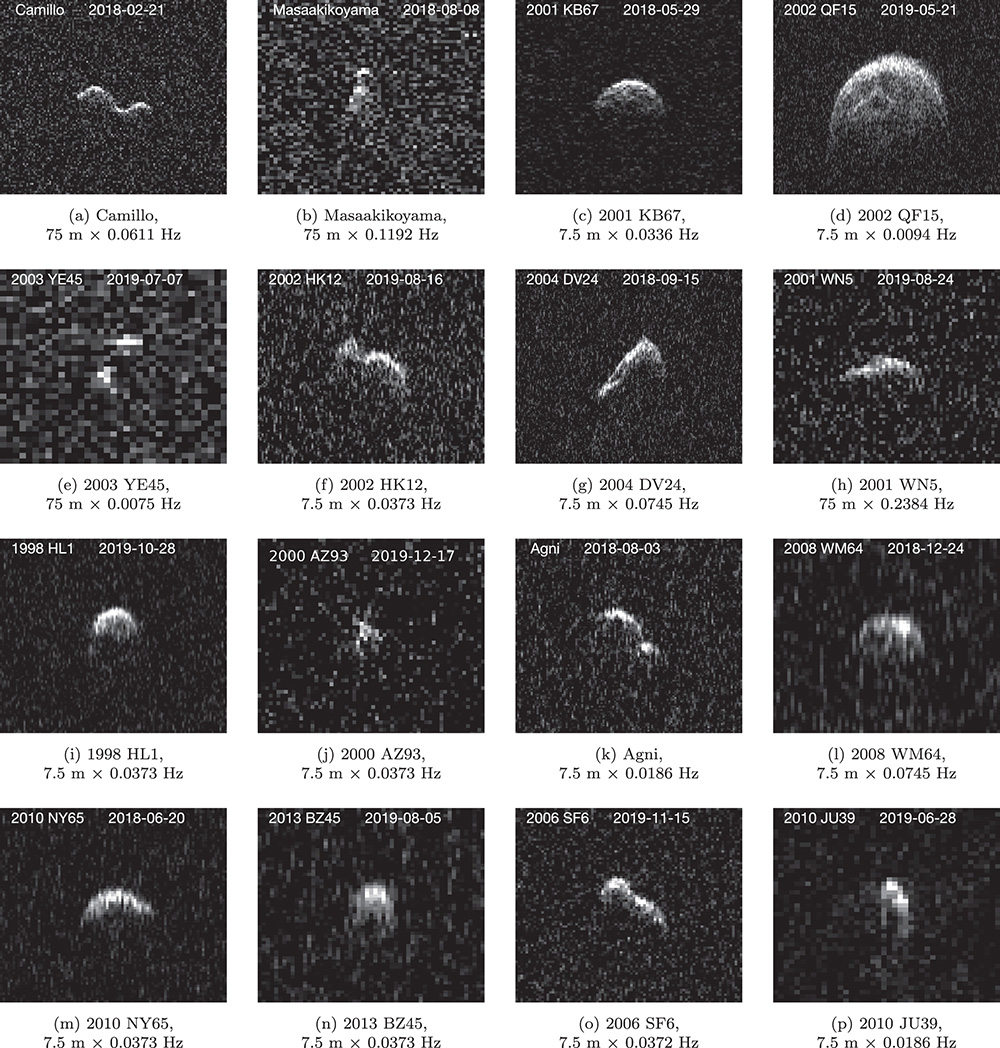The largest set of radar data for near-Earth asteroids will help us understand their origins and protect Earth from future impacts.
Astronomers have released the largest ever dataset of near-Earth asteroid radar observations. Made with the now-defunct Arecibo radio telescope, the team hopes that it will provide important insights into defending our planet from impacts and mining asteroids in the future.
The Arecibo Observatory’s 305-meter radio dish was the second largest single-aperture telescope in the world before it collapsed beyond repair in 2020. The cache of radar observations presented in the new dataset, which includes 191 near-Earth asteroids (NEAs), was obtained between December 2017 and December 2019.

Anne Virkki et al. / Planetary Science Journal 2022
“The amount of valuable data collected is unique, and these results could not have been achieved with any other existing facility,” says team member Flaviane Venditti (Arecibo Observatory). The work was published in the Planetary Science Journal.
While astronomers often discover asteroids visually, precise radar observations help them accurately work out the asteroid’s distance, speed, shape, and rotation period. Astronomers can even make out features on the asteroid’s surface down to just 10 meters across.
The Arecibo group’s main goal is to support NASA’s planetary defense activities. The more we know about NEA properties, the higher our chance is of diverting one from a collision course with Earth. “We know very little about all but a few,” says Ken Amor (University of Oxford, UK), who was not involved in the research. “This survey is the first of its kind.”
The importance of such measurements is underscored by the fact that previous radar data from Arecibo was critical in deciding which asteroid to target as part of NASA’s recently successful Double Asteroid Redirection Test (DART) mission.
Team lead Anne Virkki (University of Helsinki, Finland) describes this study as a “treasure trove of data” for planetary scientists. Of the 191 asteroids detailed in the catalog, 37 come with particularly high-quality data.

NASA / Arecibo
Among other things, the catalog includes detailed 3-D radar images for these 37 asteroids. “It is a difficult and time-consuming process to extract this information from radar data, and they are usually published one at a time,” says Stephen Lowry (University of Kent, UK), who also wasn’t involved in the study.
Shape models contain a wealth of information and implications. “Detailed shape models of asteroids are vital in order to understand how they respond to heating from the Sun, for example,” Lowry adds. “Thermal emission from the solar-heated surfaces of asteroids can significantly alter their orbits.”
The report also includes several individual discoveries:
The asteroids 2011 WN15 and 2014 SR339 have unusually high radar albedos, meaning they reflect an above-average amount of radio waves back to Earth. The researchers suggest that this might be because they are rich in shiny metals. As only a handful of metal-rich NEAs have been discovered before, they could be potential targets for future asteroid-mining test missions.

Arecibo / GBO / NSF / NASA / JPL-Caltech
Observations of another system, the binary 2017 YE5, confirm that each asteroid in the pair is roughly equal in mass. It’s only the fourth equal-mass binary ever seen in the NEA population.
2017 YE5 also appears to be a D-type asteroid, characterized by a very low albedo. Normally, such organic-rich asteroids are found in the outer asteroid belt and beyond. The authors suggest that 2017 YE5 could be the first D-type found near Earth.
The asteroid also has radar-scattering properties that suggest a significant abundance of subsurface water ice. “An asteroid with water ice beneath its surface may produce a jet of vapor by either direct warming from the Sun, or by collision with a smaller asteroid,” says Amor. “Such jetting action can alter the asteroid’s orbit.”
Knowing which NEAs contain this volatile material will give observers a list of objects to monitor closely for any threatening deviations in trajectory.
According to Virkki, this data release is just the start. “This paper is like a teaser for a full movie,” she says. “In fact, there’s still a lot of high-quality data to be analyzed in detail, which could even support planning future spacecraft missions to small bodies.”
Analyzing existing data is all they can do for now, unless investments are made elsewhere in radar. The National Science Foundation announced in October that they will fund an educational center at Arecibo but will not fund the dish’s replacement.
 3
3









Comments
Anthony Barreiro
November 2, 2022 at 6:20 pm
If Arecibo were replaced with an array of smaller radio telescopes working as an interferometer, would the new array be able to do this same sort of radar? Or do you need one big dish to transmit a narrow and powerful radio signal?
You must be logged in to post a comment.
Monica Young
November 4, 2022 at 10:54 am
Hi Anthony,
Yes, indeed, radar would have been a possibility. In fact, the Next-Generation Arecibo Telescope concept (which was still in preliminary phases, since it was never funded as a concept study) had lots of smaller receivers with radar capabilities. You can read more about that concept here: https://www.naic.edu/ao/ngat.
You must be logged in to post a comment.
Anthony Barreiro
November 5, 2022 at 12:08 am
Thank you Monica.
I'm still hoping that Arecibo will be revived as a working observatory. You can teach a lot more STEM when you're doing science, technology, and engineering, and more math than just running the cash register at the gift shop. Puerto Rico needs a powerful political champion. West Virginia has the Green Bank Telescope because their senator Robert C. Byrd made it happen.
You must be logged in to post a comment.
You must be logged in to post a comment.